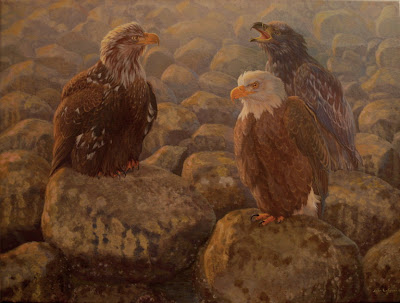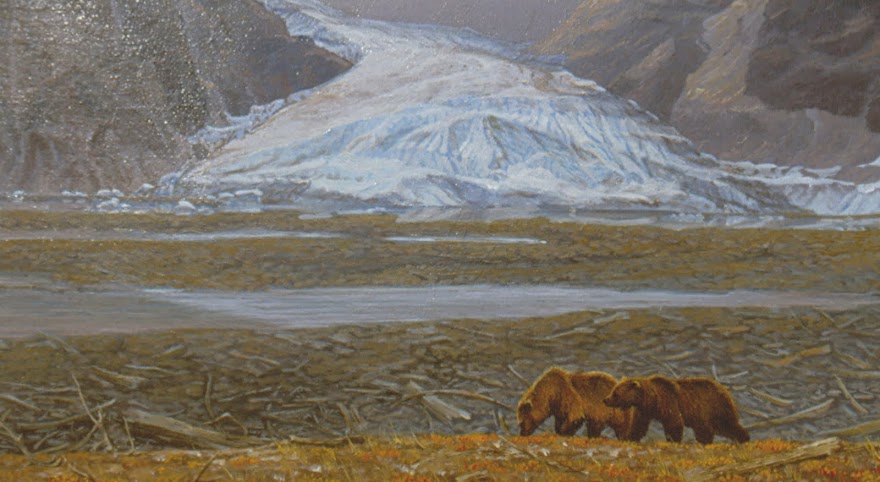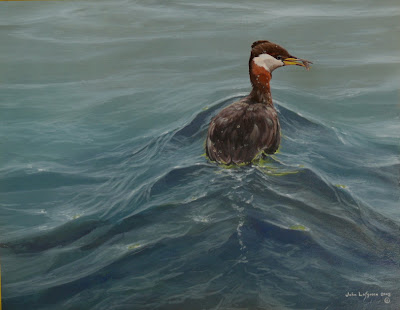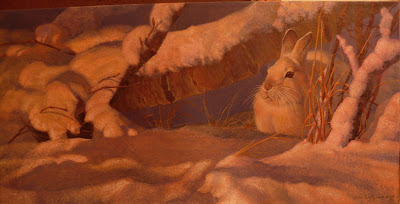When I was younger, often I would longingly admire the work of established wildlife artists. An artist would paint something, for instance an eagle, and I would look at it and say, "there is no need for anyone to ever paint another eagle because this one is perfect, and who could add to that?" Six months, or a year later I would see another eagle painting by another artist, that put the first one to shame. How could that be if the first one was perfect?
Of course perfection is not a static condition, it's a fluid existence that always progresses. How do I measure perfection in my own art? Since I can't know how others percieve my artwork, I can only measure it against my own arbitrary standard. The way I judge my own paintings is by comparing the completed work against the mental picture that first inspired the painting. It does'nt matter whether the painting looks good, I dont even know if it looks good, unless it looks the way I invisioned it would look. Someone else seeing what I consider to be perfect, may not relate to it at all.
My paintings almost never look the way I wanted them to look. In fact, in me whole carreer, only three paintings have come close to the mark. One of those paintings was just completed today.
This is the first of my perfect paintings. Spectacled Eider, 8x10". Of course it is far from perfect by any standards other than the fact that it looks just like I intended it to look. If you have modest expectations, then it's easier to reach perfection. The actual painting, looked much better than this photo indicates.
This is my second perfect painting, Red-necked Grebe, 11x14" This is a more ambitious effort than the first. Miraculously, I painted the whole thing in one day. Everything went smoothly without a hitch. Why cant they all turn out like this one?


Here are two photos of the third perfect painting. The varnish is still drying on this painting. Feather Dusters, 18x24" It is a much more ambitious work than the grebe painting, and it took weeks to complete. I was interested in three things with this painting, light, atmosphere, and texture. These are the main themes of many of my paintings. I also wanted to make the eagles look down, and dirty. The mottled plummage of sub-adult Bald Eagles is more interesting to me than the more pristine, brown and white of the adults. That is why I portrayed two sub-adult birds of different ages, and one adult for comparison. They are lounging about on a rocky coastline like Bald Eagles often do here in Alaska.
Many people resent the eagles because they eat all kinds of garbage to survive the winter. Then in the summer, the elevated eagle population, eat many young loons, and Sandhill Cranes. Loon, and crane populations are on the decline, while eagles are more abundant than ever.




























